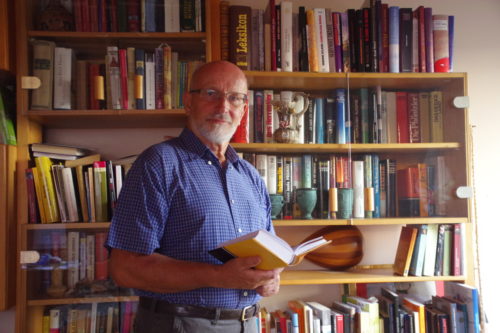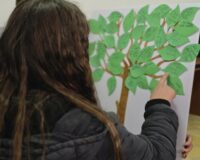A nobleman, author of many wonderful books and an avid kayaker, best described in the foreword to his book Rivers, Gorges, River Rapids (1987):
When one really immerses himself in their rivers, gorges and rapids, he will most likely never forget them. He is more and more attracted to this world that is different from what we are used to seeing from riverbeds. If you see it from the river and observe it along with the current, you discover a previously unknown landscape, with trees that bend over the surface of the water, with wide dunes or rocky walls that seem to touch the sky.

Sometimes you can startle a flock of birds resting on the sand dunes or a solitary animal drinking water on the shore. You can see the shepherds with their flocks, the lonely lodges, the cities and the bridges, to which the cars rush. Only someone who sails a boat understands how alive a river can be and how hopeless and dead this river can be when someone destroys it or poisons it with sewage from cities and factories. That is why kayakers are the ones who are trying the hardest to awaken people’s conscience and save the rivers before they are all destroyed.
You have to experience the river. For those who haven’t experienced the feeling of rising from a kayak, hitting the rapids of the river and becoming aware of their insignificance in the depths of the canyons, this tour would help a little to understand the wonderful world of rivers. The beauty of rivers is revealed only by paddling them or traveling with kayakers.
When our ancestors became aware of their surroundings, they discovered for the first time how beautiful the world is. A morning is beautiful when the sun rises above the horizon, but when it sets it is impressive to see a storm covered by black and bright clouds. In spring we hear the chirping of birds, while in winter we discover the melancholy of snowflakes falling from the gray sky.
As a kayaker, I have discovered the true beauty of rivers. You can see it just by walking along them or leaning over a bridge and see their streams that are always in a hurry. But when you are inside a kayak, you enter a completely different world, one that immediately takes you with it. You pass through an ancient nature where nothing is taken for granted. You surrender to this new place, where there are no people or cars, and you hear only a slight hum as you drive. You pass through the rapids of the rivers, where their “music” makes you feel at home, which is sometimes relaxing and sometimes threatening. When you overcome difficulties, you can feel your energy, discover the symphony of a murmur or a spark, and everything becomes perfect. If Aristotle were alive, he would compare the journey along the river rapids to an ancient drama. Upon reaching the goal, you feel clean and reborn.
Not even poets could escape the beauty of rivers. The great poet of Slovenia, Prešeren, looking at the deep green water of the rivers, turned his old tales into poetry. Gregorčič wrote a hymn about our most beautiful river Soča. What would he write about this river if he knew what we know, who have paddled its rapids?
On the other hand, technocrats say that development is inevitable. But this development, which is one-sided, does not deserve to be called such. Is everything done for development worth destroying the world? Instead of the real world, we offer people a substitute for it on TV and on movie screens. Advertisements turned night into day and their loud voice destroyed our ears. The street lights in the villages are on at night even though no one walks anymore. We light up all our churches, castles and monuments every night. We act as if energy is just another number in our account. But by producing it we are destroying the world.
When the world changes, it loses its beauty. The bare avalanche slopes that were once part of the forests now look ugly, the smoky industrial cities now look gray and their sight in the dark is not pleasant. The rivers that were once clean and green and sparkling and rustling, now flow without beauty and life, like an old and tired lady. There is no challenge, no encouragement for the young, and no opportunity for emotional release. In their place, they have only illusions, which replace the real world, dissatisfaction and drugs.
We have to make a decision and create an agreement between greed for comfort and a healthy mind. We will not return the world to the time of the Middle Ages, but we must save the healthy, beautiful and encouraging environment. This is achieved by keeping the rivers, which are the true beauty of the earth’s surface, clean and flowing. Let’s preserve them for future generations, for future optimism and for the pure soul in a kayaker’s body. Let us save them for fish and fishermen, also for brave swimmers, for lovers, poets and painters, for the sigh of the waves that caresses our ears, for the sun and the moon, to see each other in these waves.
—
The Balkan River Tour is a joint activity of Leeway Collective, EuroNatur, Riverwatch, and WWF, organized within the “Save the Blue Heart of Europe” campaign. Without taking into account protected areas, endangered species or local communities, around 2,700 hydroelectric dams are planned to be built between Slovenia and Albania. With this campaign, we want to stop the tsunami of dam building.
Find out more here: http://www.balkanrivers.net/ and http://www.balkanriverstour.com/







